

Portfolio Exercise 1: The meaning of 'meaning'
Portfolio Exercise 2: Carbon tax and other dirty language
Portfolio Exercise 3: Euphemism, political correctness and disabilities
In class this week we will be showing you how to use the library resources to complete the Annotated Bibliography exercise (Word version). Here's the pdf version. This exercise is part one of Assignment 2, your report writing assignment and you may be required to revise and resubmit it if it is not done properly. In order to complete this successfully:
Most human communication
uses language as a channel and professionals and students are always often
required to write or speak persuasively and informatively. To this end,
as a professional communicator in training, you need to understand a little
about how language in general works. In the lecture in week 1, I spoke
about the importance of the concept of noise (remember Shannon
and Weaver?) to an understanding of communication. I mentioned that one
form of noise was called "semantic noise", meaning the misinterpretation
which occurred when words were either misunderstood or misused. This week
we are going to look at some of the introductory principles of what your
textbook calls "the game of language".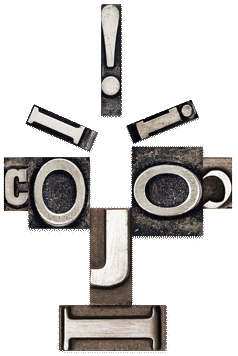
For a detailed overview, read Chapter 2 of your textbook (also in the 'Tutorial Readings' tab at the top of the page).
Language is not a neutral medium where words mean the same to everyone that only conveys the 'intended' meaning of the writer or speaker. In some ways it can be compared to a sponge which both soaks up and reflects the milieu in which it is used (a sponge will become discoloured if being used to wipe up dirt), while also having an impact on the environment or purpose for which it is being used (a dirty sponge will soil or contaminate a clean surface).. As we noted last week in our exploration of the processes of perception, the meaning we make occurs in our brains and what we understand is influenced by a range of factors including our education, experience, culture and the situation or context in which an experience occurs. Language is not separate from this.The question which is asked by those who study how language works is to what extent it influences the way we think. According to Australian linguist Dale Spender (1994, 3)
[l]anguage helps form the limits of our reality. It is our means of ordering, classifying and manipulating the world. It is through language that we become members of a human community, that the world becomes comprehensible and meaningful, that we bring into existence the world in which we live." (Spender,1994, 3)
She is arguing that language is a vehicle through which we understand the complexities of our world. In other words, language is a vehicle which both reflects and is a reflection of our world. However, to what extent are language and thought related? Does language shape our perceptions and to what extent do the language choices we make as writers or speakers reflect our view of the world?
Meaning is an elusive concept. Words can change meanings over time (eg. the word 'let' as used in tennis is opposite in meaning to the standard meaning of 'to allow'), acquire new meanings (eg 'gay') or be appropriated by people to be used in a different way (eg 'filthy', 'wicked'). The same word can have different meanings in different contexts. See the following examples:
Portfolio Exercise 1: Copy and paste this into a Word document and complete both parts to include in your portfolio.
A In each sentence below substitute another word or phrase for the word 'means'.
a He means more to me than a meal ticket.
b I mean to qualify for the Olympics in 2000.
c What do you mean, ‘unqualified at present’?
d What actually is the meaning of this painting?
e H2SO4 means sulphuric acid.
f My Lotto prize means I can tell the boss what to do with his job tomorrow.
g I mean, why can’t you go to the movie with me tonight?
h Here comes Shari looking angry, and I mean ANGRY.
B. Choose another word which means the same (not the opposite) but which has a different connotation (ie implied meaning, either positive or negative). The first one is done for you.
a. You are skinny ……… I am slim
b. You are ……… I am daring
c. You are fussy ……… I am …………
d. You are careless… I am ………
e. You are lazy …… I am ………
f. You are …… I am chatty..........
Finally, in English there are many words which are misused because they either have similar meanings, similar spellings or a similar function. Your credibility as a writer can be tested by knowing which word to use in a given context. Incorrect use of language can be a source of amusement for teachers as this site shows. Can you think of other English words which will have different meanings in different contexts?
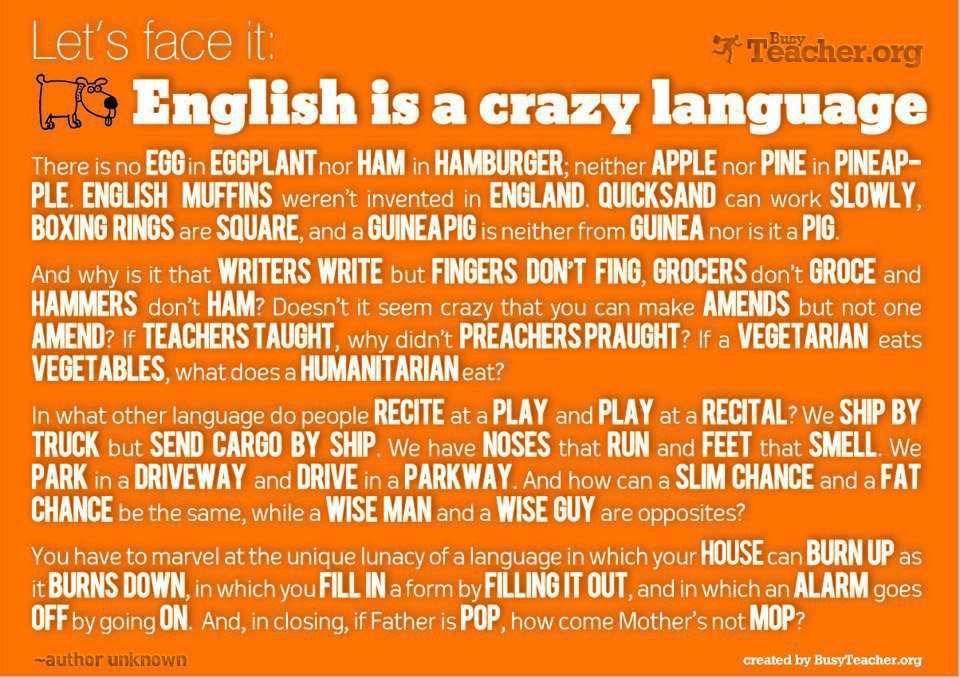 |
English is a complex language which has evolved from multiple of other languages such as Latin, French, Anglo-Saxon and so on. It is rich in synonyms ie words which have similar meanings eg think of the number of words for someone who is overweight – fat, plump, porky, obese, large. How a word is used and therefore what meaning can be derived is described in linguistics as either its denotative (objective or unemotional) or connotative (subjective) meaning. This is important to understand because often a choice of word can convey an implied political or rhetorical attitude or values. We might say that whenever we use language either in writing or speaking, we are seeking to impose our version of the world, our reality, on our readers or listeners. Linguist Ruth Wajnryb writes a weekly "Words" column in the Sydney Morning Herald which often explores these issues. Here's one on synonyms.
The English language also is rapidly changing and is closely linked to the changes in the world around us. Here is a recent article about recent new words being collected for the Macquarie Dictionary. What's a 'tweet-up' anyway? Here's a list of their most recent additions. How many of you suffer from 'phantom vibration syndrome'?
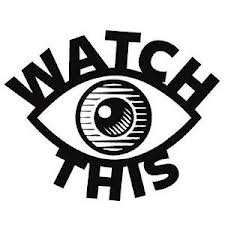
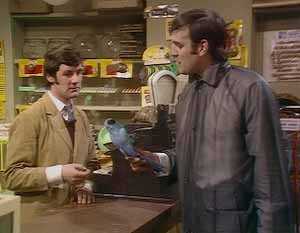
Euphemism is the practice of using non-offensive words to cover up offensive, painful, brutal actions or states. To spare the feelings of relatives we speak of someone 'passing away' rather than 'dying'; rather than ask to 'use the toilet', we ask to 'use the bathroom', use the 'powder room' or humorously, 'see a man about a dog'. Check out the famous Monty Python dead parrot sketch which illustrates this humorously.
Famous English writer George Orwell coined the term 'doublespeak' in his novel '1984' (written in 1948 at the beginning of the Cold War) which is a fictional account of the workings of a totalitarian society (should be compulsory reading for all). Since then the term has been used to signify the use of language by various authorities to insidiously change, obscure, and desensitise meaning to an audience – think of the use of the terms 'ethnic cleansing', 'friendly fire' in relation to recent wars. More recently, this kind of language has become common in business and politics, especially when organisations and governments have to write or speak about unpleasant or potentially unpopular issues.
Class Discussion and Portfolio Exercise 2: The impact of language on the framing of issues in the media
Read EITHER case study 2.3 (p. 44) 'Carbon Tax and other dirty language' or case study 2.4 (p.46) on 'Warspeak'. Comment on the way language is being used by the media to frame different sides of both of these important debates?
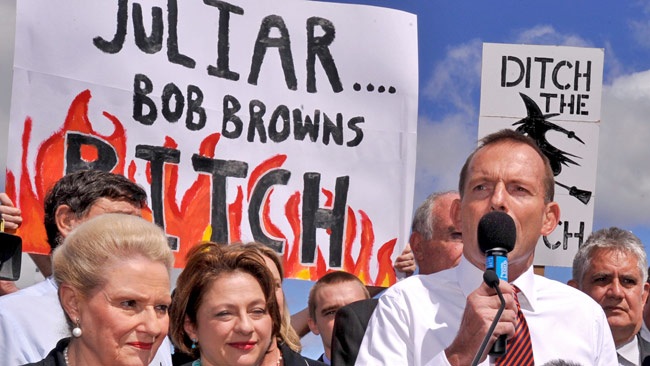 |
Portfolio Exercise 3: Writing about disabilities
Euphemism and so-called 'political correctness' can be a problem for the media also. Here's an article about language in the reporting of issues related to people with disabilities. Summarise the arguments being made by Stella Young (who is a disabilities advocate). Do you agree? How do you think that the language used affects how Australians more broadly think about people with disabilities? (write about 250 words).
You might also be interested in this chapter about euphemism from a recent book on language called 'Forbidden Words' (2006). It has been written by two Australian academics, Keith Allan and Kate Burridge. The whole book is available electronically in the library. You will need to log in using your student card barcode and surname if you are off campus.
Our textbook has been newly revised especially for this unit. Most lectures and many class activities will be based on the book, so we recommend that all students have access to a copy and bring it to class every week. Copies will be made available in the Library Closed Reserve.
In addition, class discussions and presentations will be based on more specific readings on the weekly topic. These can be found under the 'Tutorial Readings' tab at the top of this page.